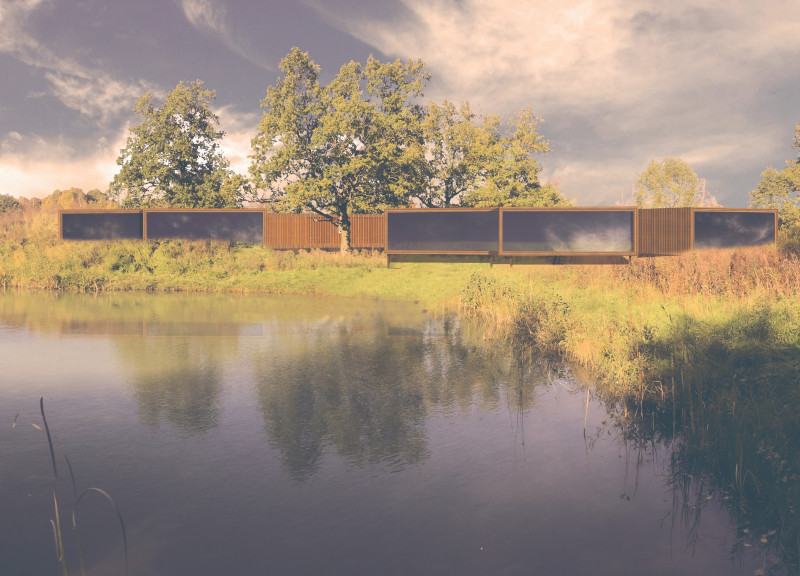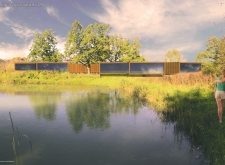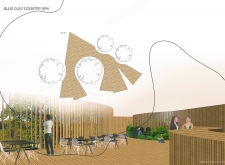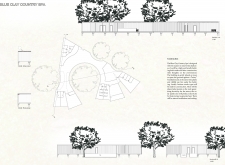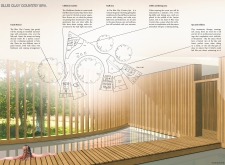5 key facts about this project
### Overview
Located in a lush natural setting near a tranquil body of water in Latvia, the Blue Clay Country Spa aims to create an environment that harmonizes wellness with the surrounding landscape. The design prioritizes an ecological approach, emphasizing the integration of natural elements such as water and greenery into the overall experience. This initiative reflects a commitment to sustainability, aiming to provide a sanctuary for relaxation and rejuvenation while minimizing ecological impact.
### Architectural Form and Materiality
The spa features a modular structure characterized by horizontal lines and open spaces that facilitate unobstructed views of the landscape. The roofing design appears elevated above the walls, contributing to a sense of lightness while reinforcing the building's connection with the environment. The primary materials used include laminated wood, which establishes a warm aesthetic consistent with the nearby forest, and large glass panels that invite natural light and frame scenic vistas. Reinforced concrete is utilized discreetly in the foundation to provide stability without compromising the aesthetic appeal.
### Functionality and Sustainability
The spatial organization includes dedicated areas for wellness treatments, social interaction, and private accommodation. The wellness area consists of treatment rooms, saunas, and relaxation zones tailored to individual needs, while the lobby and dining spaces encourage community engagement and offer panoramic views. Each guest house is designed for privacy but maintains continuity with the main facility. An emphasis on sustainability is evident through the incorporation of solar panels for energy generation and natural ventilation systems, reducing reliance on mechanical heating and cooling. Furthermore, the building is elevated on stilts, minimizing disruption to the natural landscape and promoting ecological sensitivity during construction.


